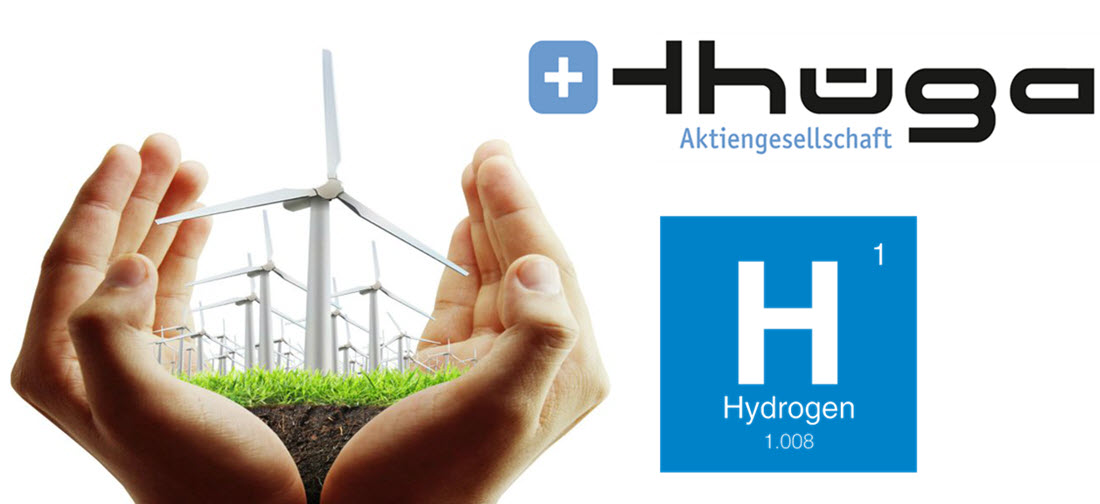
The Thüga Group participates in the “Westküste 100” real laboratory. The goal is to establish a regional hydrogen economy on an industrial scale to decarbonize industry, transport, and heat.
The “Westküste 100″ project is one of the winners of the “Real Laboratories of the Energy Turnaround” ideas competition organized by the Federal Ministry for Economic Affairs and Energy. At the heart of the project is the holistic research and development approach to produce green hydrogen from offshore wind energy, using the waste heat, hydrogen and oxygen that is generated. The green hydrogen is to be used both for the production of climate-friendly fuels for aircraft and to be fed into gas networks.
Hydrogen from electrolysis and unavoidable CO2 from regional cement production in Schleswig-Holstein are used in the manufacturing process for fuel production. Together with the partner company Stadtwerke Heide GmbH and Thüga Erneuerbare Energien GmbH & Co. KG, Thüga Aktiengesellschaft is participating in the project, in which another eight companies are working together across industries.
“The energy transition can only succeed if we use the existing gas network to provide decarbonized gases such as green hydrogen for industrial production and to heat our apartments and houses,” explains Michael Riechel, Chairman of the Board of Thüga AG. “The technical solutions are in place, now it is important to advance the implementation on an industrial scale”, continues Riechel.
In 2014, companies of the Thüga Group had started up the world’s first demonstration plant that generated hydrogen by electrolysis and fed it into the municipal gas distribution network. In the “West Coast 100” project, Thüga, Thüga Renewable Energies and the partner company Stadtwerke Heide will test under real conditions to what extent it is feasible to add hydrogen to the existing gas network to operate heating systems. For this purpose, up to 20 percent by volume of hydrogen should be added in a network section with more than 200 end customers. “The results of this real laboratory are made available to the Thüga Group with its almost 100 municipal companies. It can thus serve as a blueprint for the transit towards decarbonized gas networks,” adds Dr. Matthias Cord,
The cross-sector project partnership from EDF Germany, Holcim Germany, Open Grid Europe, Ørsted Germany, Raffinerie Heide, Stadtwerke Heide, Thüga AG, and thyssenkrupp Industrial Solutions plans to build an electrolyzer with a capacity of around 30 MW by 2025 and believes that in the future that even 700 MW output can be achieved.
Source: Thuga
Read the most up to date Fuel Cell and Hydrogen Industry news at FuelCellsWorks




